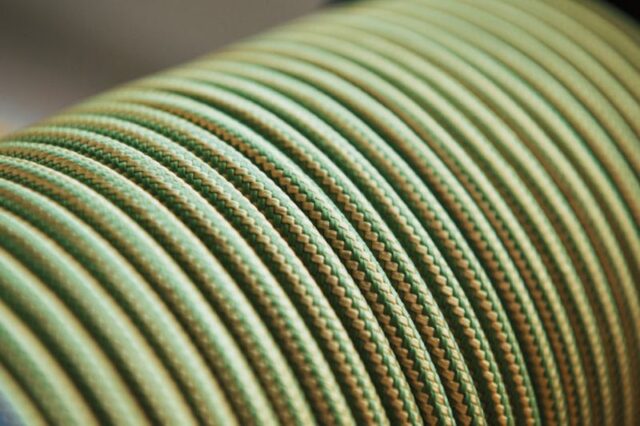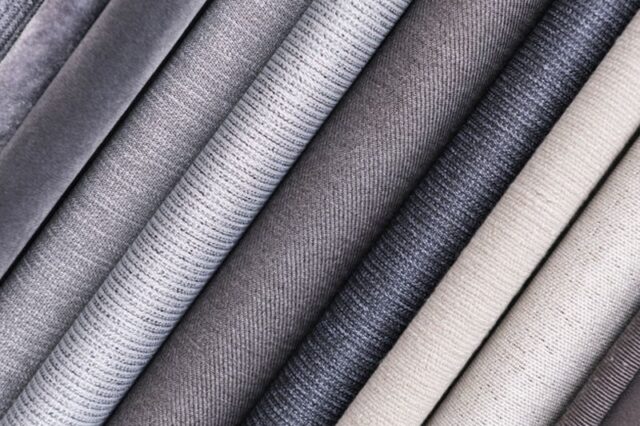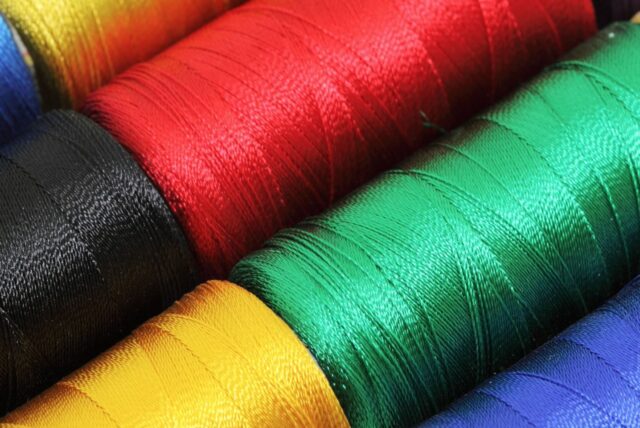Most of us have encountered nylon; either you have seen the label inside your clothes indicating that the material used is nylon or used a nylon product such as a toothbrush unknowingly. The use of nylon has become widespread since the early 1930s, playing an essential role in the second world war.
It was most preferred due to its toughness and strength therefore used for making objects such as tents, climbing ropes, and parachutes. Nowadays, nylon is mostly used to make undergarments, swimwear, umbrellas, toothbrush bristles, knits and stretchy clothes such as stockings. Almost entirely everybody uses these clothing and could be familiar with nylon.
What is Nylon?
Despite having seen or interacted with a nylon product, have you ever wondered where the fabric used to make it comes from? Or else, what compounds constitute that nylon fabric? Well, to make it clear for you, nylon is a type of plastic which is obtained by reacting two compounds extracted from crude oil. These compound molecules, Diamine acid, and Dicarboxylic acid are reacted with each other to form a larger polymer which is now the nylon. The reaction takes place under hot and high-pressure conditions producing nylon in the form of a sheet. It is then broken down into smaller pieces, melted and then formed into fibers which are later woven into specific fabric products.
Some naturally occurring polyamides were formerly used; Such include silk and wool which nylon from human-made polyamides has continuously replaced. There are different types of nylons each possessing different characteristics and properties. However, all kinds of nylon share one common feature that is, they are non-biodegradable. It means that they are not efficient in preserving the surroundings. Besides, the process of producing nylon and its products is harmful to the environment as it involves introducing specific contaminants to the environment.
It is currently tough to dispose of these nylon products more so in non-developed countries where the waste disposal methods are unreliable. Therefore, if nylon ends up being poorly disposed, it will most definitely impair environmental health.
Disposal Methods
As the use of nylon related products increase, the disposal rates increase as well. That means that more plastics and other polymer products are continuously introduced into the environment, including both the terrestrial and aquatic ecosystems. In most cases, people usually dump these items in the garbage after use. Mostly, the litter is left on the ground for a long time without proper handling. Nylon has a slow rate of falling-off and hence will last for long in the ground without decaying off. In most instances, when the trash builds up, it is buried deep into the ground though with the risk of lasting its possible effects for an extended period.
The alternative solution to this problem could be setting the litter on fire using an incinerator. This method though is a pollutant to the environment as well since during the process a lot of harmful gases are released into the atmosphere. The gases are thence inhaled by humans and animals causing breathing difficulties and other health disorders.
In this article, we shall describe the effects nylon has on the environment, both in the aquatic and sublunar sections. The results may either be positive or negative though evidently, the long-term adverse effects surpass the positive consequences. Therefore, there is a need for advanced methods of disposal or even replacements for nylon could be useful as well.
Introduction of Microplastics Into the Environment

Since nylon is a type of plastic, it gets introduced into the environment as pollutants in the form of microplastics. There two main sources of microplastics in the atmosphere, primary microplastics, and secondary microplastics.
Primary microplastics
Particles of plastics are continuously introduced as we continue using items made of nylon. These particles are slowly introduced through wear where they usually find their way into the surroundings in small sizes. Items that may contribute to this include hand cleaners equipment, fishing lines, and nets, toothbrushes, industrial abrasives, among others. Primary microplastics least contribute to the introduction of pollutants as compared to other sources.
Secondary microplastics
When larger nylon materials find their way into the surrounding, they form the most significant part of environmental pollution. Mostly, such elements are introduced by actions of a human, that is, through dumping of nylon products inappropriately. These materials eventually find their ways into various sensitive areas including water bodies, thereby transporting organisms and acting as their inhabitant.
Human activities such as fishing introduce microplastics in the aquatic environment. Vessels used in the land and waters are also carriers of microplastics for example vehicles through tires and ships through existing synthetic polymer products used to build them. Other secondary processes that lead to the introduction of microplastics include:
- Dumping of laminated nylon items
- Mulching using nylon papers
- Abrasion from household plastic items
- Paints based on polymers where they may spill onto the ground or on water bodies
- Fibers released from cleaning products
- Losses of waste during collection and recycling
Effects of Nylon on The Environment

Nylon has impacts on the environment mostly affecting it negatively. However, it has various advantages and benefits, which makes it still the most preferred material for producing particular items. These benefits are what has made nylon surpass other products such as silk and wool which would seem efficient as they occur naturally. Here are some of the benefits associated with the use of nylon products.
1. Cost efficient
When it comes to naturally occurring synthetic fibers, the processes involved are relatively costlier to maintain than for synthetic polymers. That includes rearing of the specific animals until they bear these produce, which is an expensive process. Nylon is less costly compared to silk, cotton, and wool thus making it more reliable.
2. Durability
Unlike other synthetic polymers, i.e., silk cotton and wool, nylon is more robust and resilient hence more durable. It is therefore suitable for producing materials that can withhold high mechanical pressure, such as ropes, parachutes, tents, among others.
3. Fantastic for lightweight clothes
Nylon is lighter than other fabric materials used to make clothes. It is hence suitable for making shorts and shirts used for sports and athletics. Due to the lightness, an athlete does not have to struggle with weighty clothing. Nylon-based clothes allow enhanced evaporation of sweat during the sporting activity.
4. Repels moisture
Nylon acts as water resistant, and therefore moisture may not find its way into and through the material. That makes it suitable for making items such as umbrellas and raincoats. Since the material does not store moisture as well, it means that a cloth made of nylon is not likely to support the growth of mold which results in bad odor. Mold growth is supported by moisture which is merely present in a nylon material.
5. Important in developing a prototype
Nylon has a low melting point and can easily be molded into different shapes once in this molten state which has become so crucial in technical works involving the development of prototype models. That makes it suitable for use in 3D printers and CNC machines which have helped in technological advancements. Processes such as surgery, in the medical field, are enhanced by the use of such material for model printing.
Impacts on Terrestrial Environment

On the terrestrial environment, nylon has a wide range of effects on humans, animals, and plants despite the accompanying benefits. First of all, it is a source of dirt making the environment appear filthy. Nylon is non-biodegradable implying that the decaying process may take place at a prolonged rate or not occur at all until after a very long period. Therefore, when poorly disposed of, i.e., thrown carelessly into the ground, it makes the environment look unappealing and could remain in this state for an extended period.
Secondly, though nylon does not comprise compounds that may pose a threat to the environment, the process involved in its manufacture poses risks. During production, gases such as nitrogen dioxide and other nitrous gases are released. Nitrogen gas is harmful when released to the atmosphere as it reacts with the ozone layer gases thereby weakening it. In turn, harmful waves from the sun can now penetrate the atmosphere causing adverse effects. Harmful UV lightwaves produce an impact on human skin, a drought by killing plants and drying up water sources in most places due to increased heat in the atmosphere. These emitted gases are also responsible for global warming where they block reflected light from the earth crust. Unnecessary heat is therefore retained in the earth’s atmosphere resulting in global warming.
In some cases, the compounds from nylon may find its way into the human body. Some research shows that ingestion of such compounds may lead to effects such as reduced appetite and lowered energy reserves. It may lead to physiological disorders as well. Nylon products also offer breeding sites and inhabitant to various microorganisms. Therefore, if such get in contact with humans and animals, they may be harmful in their bodies.
Products made of nylon are hard to dispose of, and the most prevalent method to do that is through burning the litter. The incineration process has effects on plants, animals, and humans. Burning them produces smoke which may cause breathing difficulties in animals and humans. The smoke blocks stomata in plants as well, therefore, preventing efficient transpiration process. Smoke forms a coating on the plants blocking even processes such as photosynthesis due to poor penetration of sunlight through reduced exposure. Smoke released clogs atmosphere as well, reducing visibility which may cause accidents of vehicles and airlines.
Nylon is flammable, and it can hence accelerate the rate of burning in case of an accidental fire breakout. Though flammability property can be harnessed and used in a beneficial manner such as lighting purposes, nylon products may be dangerous at times. Therefore, you should ensure that nylon products are not mostly close to fire sources or possible points of fire outbreaks.
While nylon is manufactured, a lot of water is required to cool down the hot formed fibers. As water is passed on them, it carries along compounds that may end up infiltrating into the ground. It means that if this water is not disposed of appropriately, it may end up causing environmental pollution.
Impacts on Aquatic Environment

Nylon products have affected aquatic life negatively as well, right from the production to the disposal of these items. First and foremost, nylon does not combine properly with dyes and hence hard to add colors. The method used to add color to nylon fabrics involves processes that significantly contribute to water pollution. Advanced techniques of disposal should, therefore, be used to damp off by-products and used water more so in developing countries where there are vulnerable methods of waste disposal.
Fishing nets are the most significant contributor to water pollution, mostly in the lakes and oceans. They introduce microplastic compounds in waters as the material wears off during fishing. Since nylon does not wither easily, the effects may last for an extended period as the particles remain deposited at the seabeds. It means that nylon is a major concern when it comes to water pollution as it is the most significant water polluter. Despite the benefits associated with nylon fishing nets, the effects they produce should be a cause for alarm.
Sometimes, items made of nylon may be carried by running water into rivers and more abundant water bodies. When they reach these bodies, they mostly tend to float; since they have a lower density than water. While they float, dust and harmful microorganisms may settle on them causing the piece to sink eventually. When they get to the bottom, they offer a perfect probable site for the growth of organisms such as algae. Such microorganisms are harmful to aquatic life as creatures living in water may die by consuming them.
Animals in the water might also ingest sizeable microplastics which may lead to obstruction of several body systems. Breathing system together with the digestion system is some of the prone processes to risks from these microplastics. They may even injure internal parts causing internal bleeding which may eventually lead to the death of animals. Tissues such as gills may be damaged as well as intestine tissues.
Nylons act as vectors for various microorganisms and bacteria by carrying them along. Since they are known to be transported for long distances through rivers or by human activities, they are known to carry such organisms with them. After that, they are deposited at the new destination of the plastic material thus acting as a carrier for microorganisms.
Plastic materials affect the properties of sediment too. Such features can be useful in regulation of various aspects inside the water which may eventually be helpful to the aquatic life. For example, the heat transfer rate is usually slower hence water warms at a slower rate. Plastics in the sediments also increase water permeability, and that might have effects on the survival of aquatic creatures.
So, is Nylon Eco-Friendly?
Considering the risk nylon poses to the environment, it would be clued-up to state that it is not Eco-friendly. Polymers have low decaying rate; thus, despite their advantages, they introduce pollutants into the atmosphere at a very high rate. However, as for the moment, nylon remains of low concern in terms of polluting the environment. It could be because of the lack of a better replacement thereby allowing the use of polymers with minimal regulations set on them.
Environmental experts are still carrying out researches on the actual effects of microplastics. Their introduction into the surroundings seems inevitable while there is no proof of whether these microplastics are prone to falling-out or not. Worrying statistics are showing increased levels of microplastics concentration both in the land surface and inside water bodies. If by any chance these contaminants are found to be harmful not only physically, then the environment might be at the highest risk. Otherwise, the physical effects of nylon are known to exist therefore declaring it an environmental threat. Nylon products should hence be handled with care and disposed of cautiously as well.
Are there hopes in nylon control methods?

With the increased use of plastic items and products, what do we need to do to avoid the catastrophe that may result from nylon products? May what we should ask ourselves is, are we ever going to discover better and more efficient control methods? Well, that depends on whether the entire globe will take necessary precautions towards the use of nylon products. If awareness is created among people, that would probably facilitate the invention of better methods for production or disposal. That would include the design of new materials or else new and better ways of disposing of these materials.
However, as mentioned earlier, nylon is a form of plastic and can be easily recycled. The process is easily possible due to properties possessed by plastics; they melt at low temperatures and can be reformed into different shapes. That means, despite there being no hopes of a recent discovery of improved methods of handling plastics, concentrations of microplastics in the environment may not increase substantially. Products such as Econyl are formed after recycling nylon textiles mainly obtained from old and used fishing lines and nets. There are also recycled garments such as swimwear and windbreakers; hence you should consider buying such products in the aim of conserving the environment.
It would even be worthier to use other suitable materials to produce some items. Cotton and silk can be used for special clothes while nylon is only used for items that require high durability. Such include items like bulletproof vests and ropes where great strength is needed. In some instances, while being recycled, parts of nylon are replaced with natural fibers producing a sturdy material as well.
Conclusion
In a nutshell, with the advancements in technological methods, there is a great need for improved means of both the production and disposal of the nylon products. Possibly, machines that can perform tasks like the collection of plastic litters and subject them to processes such as recycling could help. Use of tools would signify a risk-free working environment where the pollutants will not threaten workers in terms of their health. Machines are efficient in ensuring a worker does not inhale exhaust gases and does not come into direct contact with the products.
So far, there are little and limited research facts existing about the extent these microplastics would cause damage to the environment. Data about concentrations on nylon pollutants, however, shows that there are possible dangers of these microplastics. The fate and the actual effects remain to be unknown hence there is need to carry out more research to help come up with solutions to various unanswered questions. However, the concentrations of the microplastics are expected to continue rising as the use continues increasing.
Microplastics from nylon are highly persistent, and it would be difficult to eradicate the outcomes once they hit. It is therefore essential to stop massive production of nylon products to cub increased introduction of such particles. This might be beneficial in times to come as high concentrations would be harder to deal with.







